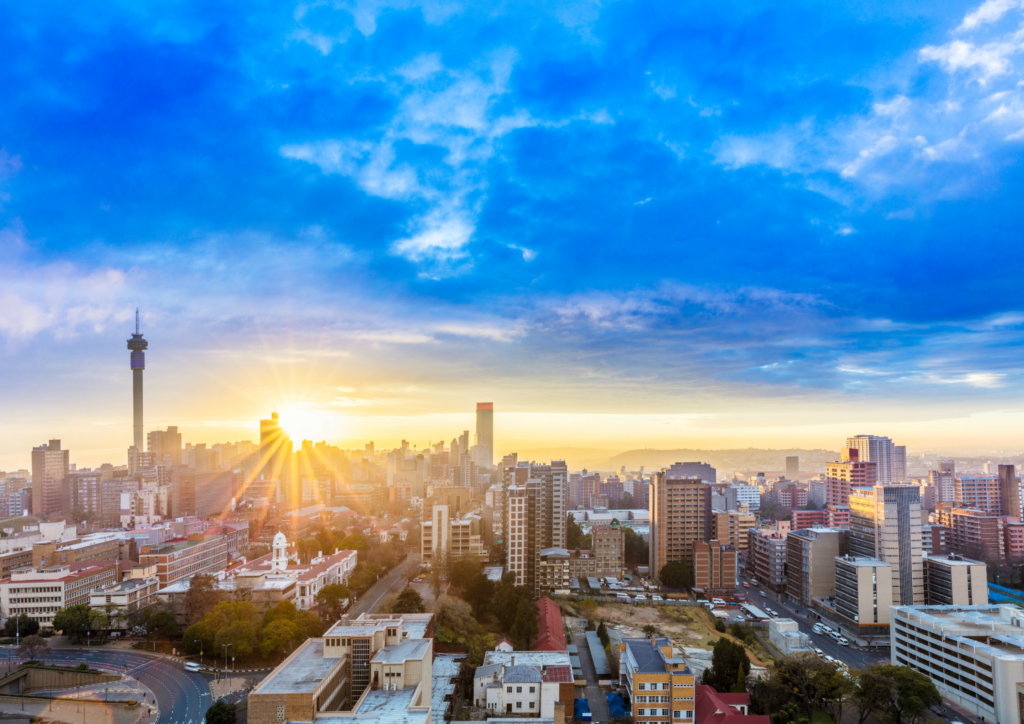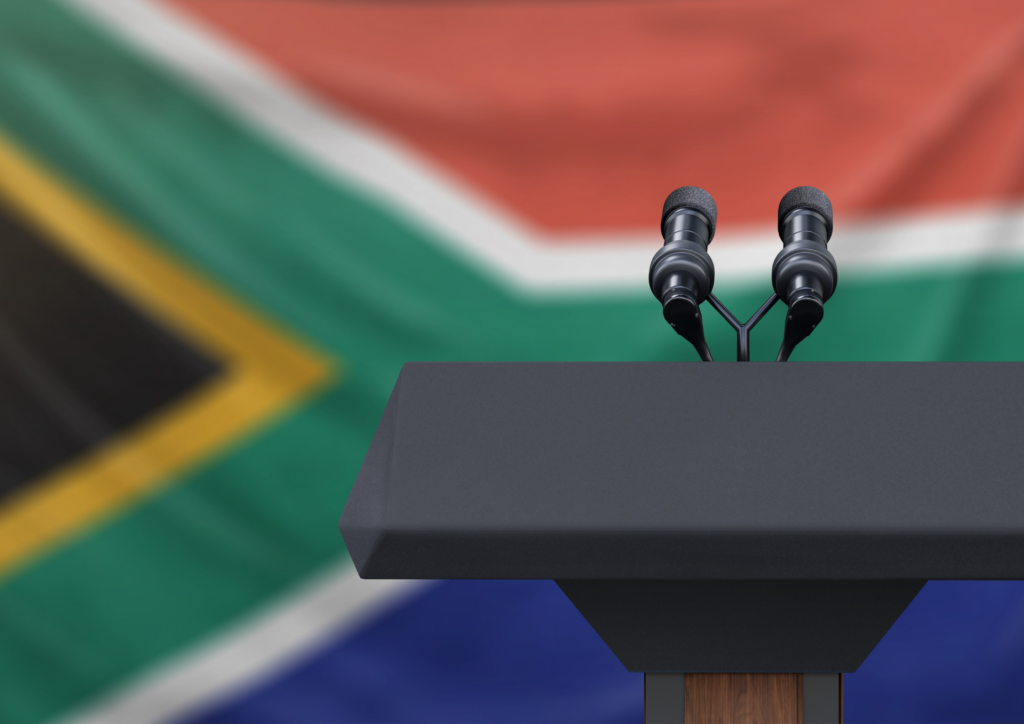For further insights on investing in South Africa, please email Associate Anna Westwell on [email protected].
On 17 February, South African president Cyril Ramaphosa delivered his sixth annual State of the Nation Address (SONA) since taking office in 2018. For the first time in the country’s democratic history, the speech took place outside of parliament due to a fire earlier in the year. It was a precursor to Finance Minister’s Enoch Godongwana’s 2022 National Budget Speech, delivered on 23 February.
Ramaphosa’s task was significant, as he set out to diagnose and solve South Africa’s overarching challenges. The COVID-19 pandemic hit amidst the nation’s longest recession to date. Lockdowns and a lack of holidaygoers exacerbated South Africa’s biggest problem: unemployment. Joblessness and income inequality have riddled the country for years, despite its position as one of Africa’s largest economies. Austerity measures, bureaucratic barriers to foreign investment, and poor fiscal management have all contributed to unemployment. The rate rose to an all-time high of 34.9 percent in the third quarter of 2021, exacerbated by the pandemic and its ripple effects.

Confronted with a dissatisfied electorate whose socioeconomic conditions have deteriorated since he became president, Ramaphosa faces an uphill struggle. Reducing the rate of unemployment and inequality is integral to reinvigorate the increasingly detached support base for the ruling party, the African National Congress (ANC). Popular frustration with the ANC was crystallised in the results of the November municipal elections, when the party’s vote share dropped below 50 percent for the first time in South Africa’s democratic history. Addressing these challenges is also perceived as being essential to preventing a repeat of the July 2021 riots, which claimed 337 lives and caused USD 1.7 billion worth of damage.
Ramaphosa’s diagnosis and solution
Amidst this tense environment, Ramaphosa delivered his sixth SONA. His diagnosis was simple: unemployment has been caused by low growth, resulting from a decline in international investment. In the 110 minute speech, Ramaphosa provided a clear solution for unemployment, asserting that job creation must come through private sector development. He stated that rather than creating jobs itself, the government shoud create an environment where businesses can grow and employ more people.
The SONA laid out three key ways in which the government could support growth in the private sector. Firstly, Ramaphosa outlined plans for developing infrastructure. A ZAR 100 billion (USD 6.6 million) Infrastructure Fund will be used to invest in energy, road and water management projects, with the government also to improve port and railway operational efficiency; and facilitate the rapid deployment of broadband infrastructure.
Secondly, Ramaphosa demonstrated his keenness to unleash the potential of small businesses. He announced that a new, redesigned loan scheme would be introduced to enable SMEs to bounceback from recent economic shocks. Godongwana’s budget speech announced that loan guarantees of ZAR 15 billion (USD 996 million) would be facilitated through participating banks and development finance institutions.
Thirdly, Ramaphosa placed an emphasis on the importance of reducing bureaucracy for businesses of all sizes. A dedicated team will be set up to cut red tape, headed by Sipho Nkosi, a renowned South African businessman. Business legislation, including the Business Act of 1991, will be reviewed to reduce regulatory burdens on the private sector.
Pervasive barriers to development will be difficult to overcome
The sixth SONA, at face value, is good news for businesses in South Africa, who have been battling obstructive government policies for years. The speech acknowledged the failure of a state-centred approach to business, and suggests that the government will now prioritise private sector development. If succesfully implemented, the promises Ramaphosa has made should lead to an uptick in private investment and commercial deals being stuck. However, there are still considerable headwinds, and the speech is unlikely to increase investor confidence in the short-term. Many of the ANC “old guard” remain in office, resistant to pro-business changes, and the ruling party seems intent on political infighting – an unshakeable obstacle to efficient regulatory reform. In addition, persistent power cuts, endemic corruption and ongoing land resettlement plans continue to deter new foreign businesses from entering the market.
Ramaphosa’s speech was also intent on immediately remedying the sources of public frustration. The electorate will be particularly interested in the extension of the ZAR 350 income grant, a social relief grant introduced in response to COVID-19, until March 2023. Godongwana’s budget will also allocate ZAR 3.33 trillion (USD 221 billion) over the next three years to support low-income households, as high prices for key commodity exports boost state revenue.
However, the solutions to joblessness offered up by Ramaphosa and his finance minister will require the faltering support base to stay loyal to the ANC for a long time in order to reap any rewards. The proposed private sector development initiatives, notably improving infrastructure, will take time to mature to a point where they are creating enough jobs to make a dent in high unemployment rates.
Another year, another SONA?
Despite its campaign-like rhetoric, Ramaphosa’s 2022 SONA is unlikely to reignite the embers of the public’s extinguished loyalty. The pledges were well-intentioned, but a concrete strategy was lacking. For example, Ramaphosa didn’t take a stance on the ongoing debate over whether the government should continue to bolster welfare spending, or prioritise creating jobs. Instead, he unrealistically, suggested that the government could simultaneously do both. Furthermore, Godongwana’s cautious budget stated that there would be no increases in VAT or other taxes, and planned to lower company tax rates, in efforts to bolster Ramaphosa’s pro-business agenda. But, he warned that this would be revisited if government expenditure increases. Godongwana also had to balance the tax reductions against measures to reduce government debt, as he increased levies on sugar, alcohol, and tobacco.
Ramaphosa acknowledged that “fundamental change and reforms” are needed to ensure South Africa’s post-pandemic recovery is prosperous. However, COVID-19 exacerbated issues of inequality, poverty and joblessness that were already plaguing the country. As such, many of Ramaphosa’s promises have been made before, whilst, concurrently, the situation has continued to deterioriate. In his first SONA, six years ago, Ramaphosa said that “we will seek to industrialise on a scale that draws millions of job seekers into the economy”. Since then, rate of unemployment has only increased, with the number of South Africans without jobs rising by over three million in the course of his presidency.
ANC must deliver to survive long-term
If Ramaphosa’s sixth SONA is exposed as mere rhetoric in the coming months, the ANC can no longer ride on the tails of the nation’s historical sentimentality to retain support. This will have implications for parliamentary efficiency in the short-term, and eventually, for the ANC’s staying power as a whole.
The ANC remains by far the largest party and will hold onto power in the short- to medium-term. The party will still win the largest share of votes in South Africa’s next general elections in 2024. The voters who have recently turned away from the party due to frustration and lack of support tend to abstain from voting altogether – lessening the risk of another party gaining a majority. Ramaphosa will also likely retain his presidency in the upcoming ANC National Congress in December of this year, as he remains the least-bad option.
However, if the pledges made by Ramaphosa in the 2022 SONA are not achieved, the ANC’s lack of affirmative action will create a larger pool of frustrated voters for opposition parties to capitalise on. The increasing presence of rival party members within positions of political influence will only create more barriers to the ANC following through on any of their promises for addressing poverty and unemployment.
Eventually, this self-perpetuating cycle will threaten the ANC’s staying power. Either, there will be a transition of power, or, the ANC will be forced to overhaul its current system and embark upon an exhaustive process of structural reform to save itself. When considering which of these options is more likely in the long-term, one must question why the ruling party has not yet managed these kinds of reforms, and ask, if not now, when?




